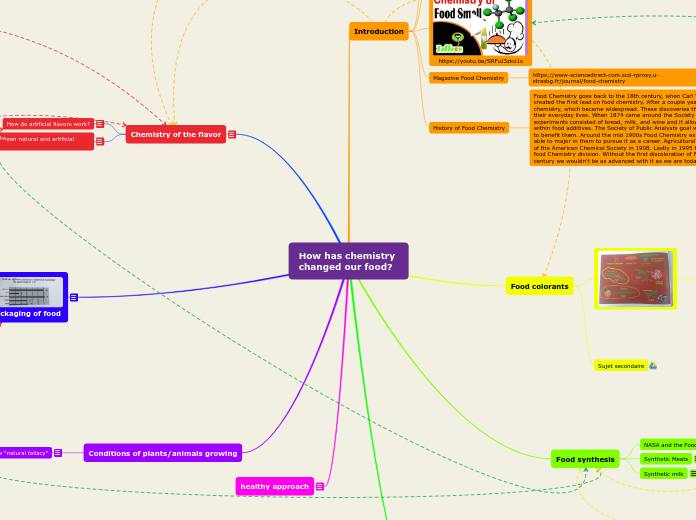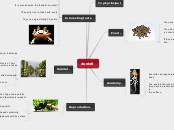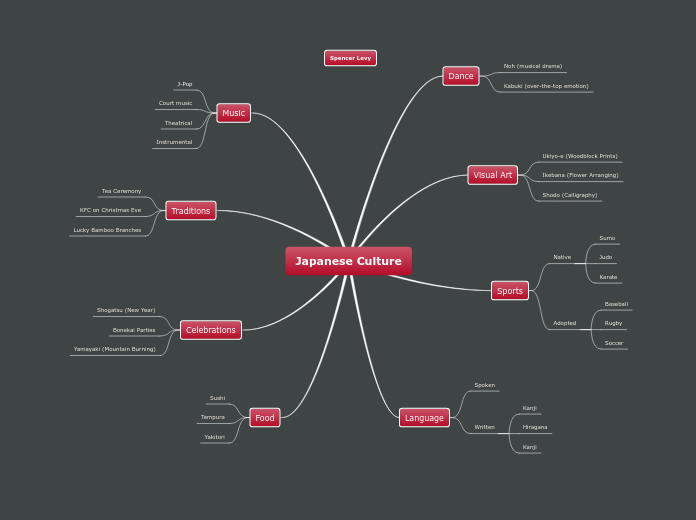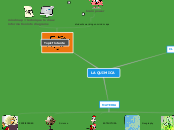How has chemistry changed our food?
healthy approach
dead food
food of the future (completely dissociated from the earth because of growing the population)
legat perico gourmand
quizz qr
Conditions of plants/animals growing
Exploitation of consumers by the “natural fallacy”
BOOK: Natural and Artificial Flavors P29
Exploitation of consumers by the “natural fallacy”
https://www.acsh.org/sites/default/files/Natural-and-Artificial-Flavors-What-s-the-Difference.pdf
When bad science is promoted, it is reasonable to assume that there are economic benefits to be gained by those who are behind the scare-mongering. Not surprisingly, the food industry — both organic and, more recently, traditional — and aggressive environmental groups have thisdown to an art form.
Thanks to marketing campaigns that are anti-science at their core,the American public has been conditioned to equate artificial flavoringwith harmful chemicals. Consumers are bombarded by terms such as“organic,” “natural,” and “synthetic” wherever they shop, without having anything close to a clear definition of what each term means. This loose, inconsistent use of terms may be on many labels, but the way they’reused renders the information useless.
Today, the word “artificial” is a marketing death knell for products. Goods are being scrutinized more and more carefully as the fear ofchemicals continues to grow. And that chemophobic framing against science certainly works.
According to Nielsen’s January 2015 report “Healthy Eating TrendsAround the World,14” more than 60 percent of Americans surveyed in 2014 considered the presence or absence of artificial flavors (and colors)to be an important consideration when selecting foods to purchase. Thisis largely due to manipulation by marketing organizations.
example
BOOK: Natural and Artificial Flavors P30
https://www.acsh.org/sites/default/files/Natural-and-Artificial-Flavors-What-s-the-Difference.pdf
For example, Whole Foods uses a variety of tricks on its website. One, specifically, is a page titled “Unacceptable Ingredients for Foods,” which is a long list of chemicals the company insists won’t be included in theproducts it sells.
Whole Foods is lying when it claims that vanillin is not used in any of
its products, stating “...[W]e won’t sell a food product if it contains any of these.” That’s because the company omits that it simply won’t sell a food product that has been flavored by the addition of vanillin. But Whole Foods is most certainly selling products that contain vanillin, and are flavored by it — anything that has a vanilla flavor. The company’s trickery is based on the fact that it doesn’t add vanillin. It is already there.
Whole Foods sells many vanilla products, and every single one of thesecontains vanillin, despite claims to the contrary. Without vanillin there
can be no such thing as the flavor vanilla. The company is intentionally deceiving customers with claims that it “won’t sell” a product containing vanillin when they simply mean they won’t carry products to which vanillinhas been added. Biologically, it doesn’t make a bit of difference if vanilla products have been flavored by vanilla bean extract (roughly 80 percent vanillin) or vanillin that has been manufactured.
The company repeats this same marketing gimmick when it claims thata product does not have “added sugar,” but rather has “evaporated cane juice.” If you evaporate sugar cane juice, you know what you are left with and so do they: sugar. Evaporated cane juice is sugar, Whole Foods just gives it a different name to make it sound healthier than added sugar.
Since Whole Foods has a page titled “Unacceptable Ingredients for Foods” and states “we wont sell a food product if it contains any of these” but they really do, it’s reasonable to ask what the purpose of the list really is. Is Whole Foods implying that there’s a health risk associated with these chemicals unless they are present naturally or change the name? It must remain a marketing mystery, but the company is not pulling vanilla products off of their shelves.
Packaging of food
Packaging is nowadays an industrial activity in its own right. The main reasons for this development are the changes in habits, the reinforcement of hygiene standards and finally an industry in full development of new technologies. Modern packaging and packaging techniques often make use of new and innovative materials. Chemistry takes a large part.
DEFRANCESCHI Mireille, La chimie au quotidien, Ellipses 2006, p. 93-104
Evolution for packaging
Metal
Beverage cans of future
Tin cans
Aluminum beverage cans
Steel beverage cans
Paper
Carton Bricks
Glass
Plastic
Plastic packaging is found in all industrial sectors, but plastic is the number 1 in food packaging. It is now considered to be 50% of the food packaging in Europe.
In the food sector, plastics make an effective contribution to life quality: the safety and the possibility of mounting integrated packaging lines where the packaging is manufactured and filled sterilely, without external contact (mineral water, yogurt) ). The appearance of multi-layer packaging, that is to say consisting of superimposed layers of plastics with complementary properties guaranteeing a good preservation of gases and aroma, has reinforced this choice. Plastic packaging also makes it possible to keep fresh products in safe hygienic and health conditions for long periods of time which may be important. For example, modified atmosphere packaging, in which oxygen is removed to avoid oxidation problems and replaced by nitrogen or carbon dioxide. Other kinds of packaging allow controlled breathing of the contents. The exchanges go in one direction and not in the other. They are widely used for fruits and vegetables.
Plastic bottles
The main polymers constituting plastic bottles are HDPE, PET and PVC
- HDPE (high density polyethylene) is used to manufacture bottles and bottles containing milk, laundry detergents or lava , softeners
- PET (polyethylene terephthalate) is used for the manufacture of water bottles,
- PVC (polyvinyl chloride) is mainly used for water, Note that in all cases, collars and caps are composed of HDPE. softeners and softeners, detergents, wine soft drinks or flat drinks, wine, cider, vinegar or oil. refreshing beverages, wine and vinegar.
Plastic bags and films
Polyolefins, which are very chemically inert, are widely used in food packaging. The polyvinyl acetals, where the starting aldehyde is acetaldehyde, have good water resistance and are used in the form of films for the packaging of meat and fruit. PE / PA (polyethylene / polyamide) multilayer complexes are often used in the packaging of sausages and cheese. Why? It is because none of these materials taken individually guarantees both a good impermeability to moisture and an oxygen impermeability. In the field of food, there are many technological innovations, particularly in the storage elements: a repositionable opening device for food containers, and a zip for its waste. They also focus on the development of more complex barrier films that increase the maximum shelf life of products.
Chemistry of the flavor
In one
experiment, at Oxford University
in 2012, participants ate sweet popcorn from different coloured bowls: the popcorn was perceived as saltier when taken from the blue bowl as opposed to a white. Rachel suggests this may be because we associate the colour blue with the sea, which is salty. Or it may be because many salty foods like salt and vinegar crisps - are sold in blue packaging.
https://www.theguardian.com/lifeandstyle/2015/feb/06/explore-science-flavour-food-drink
The fundamental difference between natural and artificial flavors
BOOK: Natural and Artificial Flavors P11
3)The fundamental differences between natural and artificial flavors
https://www.acsh.org/sites/default/files/Natural-and-Artificial-Flavors-What-s-the-Difference.pdf
Natural flavors are typically complex mixtures of chemicals derived from plants or fruits. In many cases there will be one predominant flavor chemical, as well as dozens, or even hundreds of other components. It is this complex mixture that gives natural extracts a richer, more complex flavor. But it is usually the predominant flavor chemical that will be identi-fied by someone’s sense of taste or smell.
By contrast, an artificial flavor is synthesized from other chemicals rather than being extracted from a natural source. Artificial flavors usually contain only a small number —often just one — of the same flavor chemicals found in the natural extract, but lack the others so they cannot precisely duplicate the flavor of the complex mixture. So, while someone tasting an artificially flavored food will be able to identify the principal flavor, it may seem bland or taste like it is “missing something.” Some are better than others, so we’ll discuss a few. Vanilla will be our first test case because it’s relatively simple and many people like it.
How do artificial flavors work?
https://science.howstuffworks.com/question391.htm
Smell
artificial flavors
Chemists create artificial flavors from the chemical compounds present in plants and animals. They use them in their natural state, or they process them to make new flavors. They also create concentrates by extracting the juice of fruits, such as oranges and lemons. They remove the water from the juice, and the concentrated orange or lemon juice goes into cans. You can later add water to reconstitute the juice. What’s interesting is that we don’t need all the flavor compounds in a given food to re-create its flavor.
Food synthesis
Synthetic milk
https://news.nationalgeographic.com/news/2014/10/141022-lab-grown-milk-biotechnology-gmo-food-climate/
Synthetic Meats
https://blog.kolabtree.com/innovations-synthetic-foods/
Other work spearheaded by NASA include research on synthetic meat technology. That work has since been spun out into various academic research projects and startup technologies. Synthetic, or cultured, meat relies on the same biotechnology developed to create replacement tissue and organs used in the medical field. Stem cells from the desired animal (cow, pig, fish, etc.) are grown in a nutrient-rich broth under sterile conditions. The stem cells are encouraged to differentiate into muscle tissue using a specialized medium containing factors that signal the cells to change. The matured muscle tissues are ‘exercised’ by stretching to promote muscle growth and harvested after the desired size is reached. The meat-like material is then shaped and flavored to give a meat product similar to the meat from an anima
NASA and the Food Synthesis Project
https://blog.kolabtree.com/innovations-synthetic-foods/Between
the 1960s and 1970s, the NASA Ames Research Center embarked on a project to produce food without using traditionally eaten living organisms, such as crops or livestock. The basic premise of the project was that astronauts would continue to explore space on longer and longer missions. The space and weight available for stored foods aboard spacecraft would be limited, and other processes would be needed to feed the human crew. While growing food was considered a viable option, the speed and area in which food could be grown would limit the amount of food available at any point in time. Instead, the program investigated simple chemical methods that could regenerate food using waste products and rocket fuel.
Several publications were published on processes developed to generate edible carbohydrates from water, carbon dioxide, and electricity. These processes relied on the electrochemical splitting of water into hydrogen and oxygen gas. The hydrogen gas would be reacted with carbon dioxide, captured from the exhalation of aerospace crew, to form methane. Methane would then be converted into formaldehyde by a careful partial oxidation with oxygen and led into a series of catalyzed reactions that formed formose sugars or glycerol from the formaldehyde. Formose sugars are similar to the typical sugars we eat, such as glucose, sucrose, or fructose, and so can be readily digested by humans for energy. Glycerol is a common intermediate formed in the human body on the way to metabolizing sugars, and so is also an edible product. These pure carbohydrate products can be further reacted together to form long polymers similar to starch or used directly as sweeteners.
Food colorants
Introduction
History of Food Chemistry
Food Chemistry goes back to the 18th century, when Carl Whilhelm Scheele isolated malice acid from apples. This created the first lead on food chemistry. After a couple years he published his first book on agricultural and food chemistry, which became widespread. These discoveries they were making were with food they interacted with in their everyday lives. When 1874 came around the Society of Public Analysts was created. Their earlier experiments consisted of bread, milk, and wine and it allowed them ti discover food quality, and combinations within food additives. The Society of Public Analysts goal was to apply analytical methods to share with the public to benefit them. Around the mid 1900s Food Chemistry expanded and spread to colleges and universities to be able to major in them to pursue it as a career. Agricultural and Food Chemistry division was developed as a result of the American Chemical Society in 1908. Lastly in 1995 the Institute of Food Technologist established the final food Chemistry division. Without the first discoloration of Food Chemistry by Carl Whilhelm Scheele in the 18th century we wouldn't be as advanced with it as we are today.
http://kdelunachemhonors.weebly.com/history.html
https://foodchemistry.conferenceseries.com/
Magazine Food Chemistry
https://www-sciencedirect-com.scd-rproxy.u-strasbg.fr/journal/food-chemistry
https://youtu.be/SRFuJ3zko1s
french research
In a classic experiment, French researchers colored a white wine red with an odorless dye and asked a panel of wine experts to describe its taste. The experts described the wine using typical red wine descriptors rather than terms they would use to evaluate white wine, suggesting that the color played a significant role in the way they perceived the drink.
Sujet secondaire









